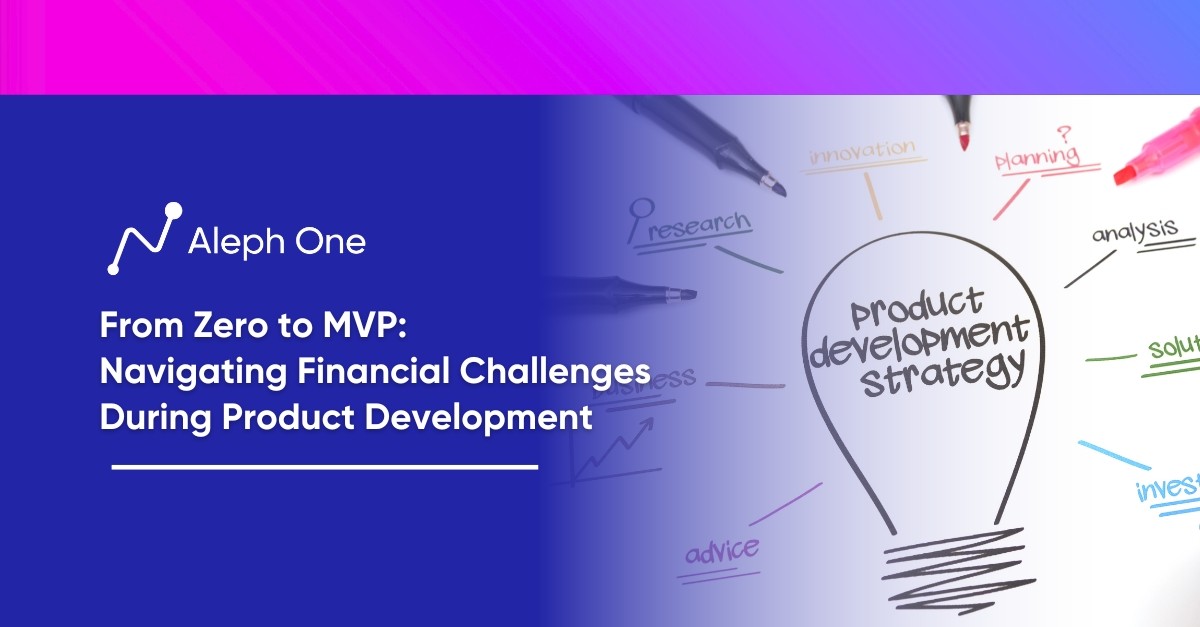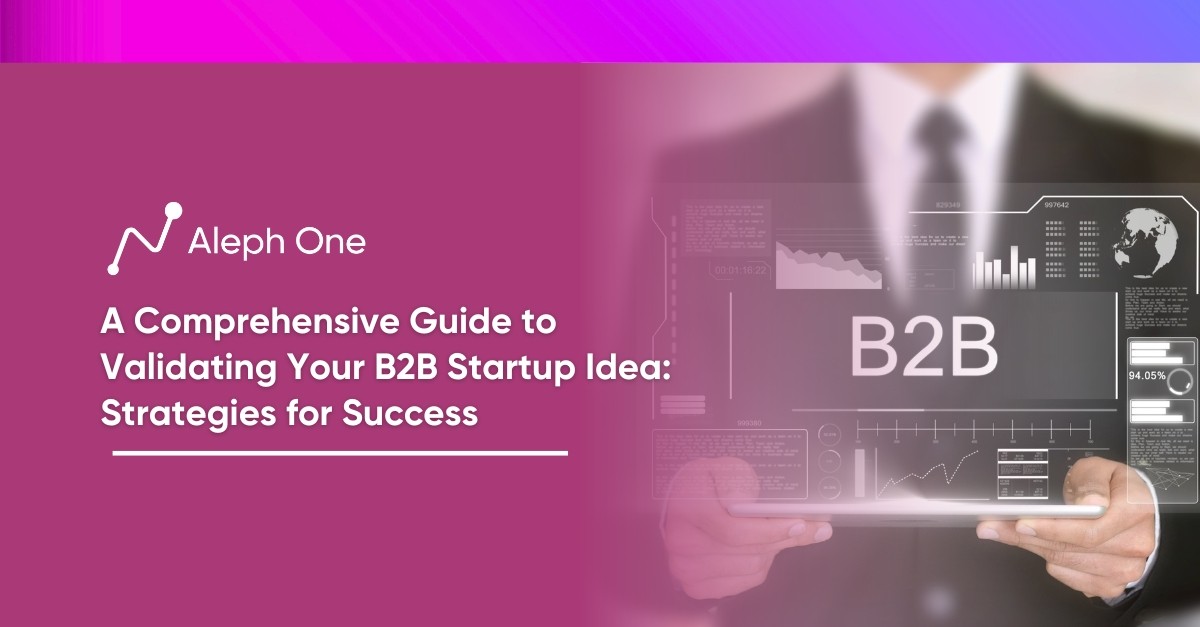Let’s work together to build something amazing. Share your project details and our team will reply to figure out the next steps to your success.

Building a successful Minimum Viable Product (MVP) is a journey fraught with challenges, and navigating the financial aspects can be particularly daunting. In this article, we explore the critical financial considerations that startups face during product development and guide how to overcome them. We delve into the importance of a clear vision to avoid wasteful spending, the perils of feature creep and its impact on costs, different funding options for MVP development, the necessity of comprehensive testing to ensure viability, and the significance of patience when scaling after the MVP launch. Additionally, we discuss the crucial decision of when to pivot or persevere based on user feedback and metrics. By understanding and addressing these financial challenges, startups can enhance their chances of achieving success with their MVPs.

The Vision Void: Why Lacking Clarity Derails MVPs
To succeed, an MVP needs a clear vision and mission. Without this clarity of purpose, teams waste time, money, and resources building features that don’t align with their core goals. Studies show that startups without a clear vision have a 32% higher chance of failure in the first year.
North Star for Decisions & Benchmark
A vision gives an MVP a north star to guide decisions and a benchmark for success. When that vision is lacking, teams end up in “vision voids” where they lose sight of their target customer, main value proposition, and business model. Caught in a vision void, teams spin their wheels, adding mismatched features and chasing every new idea.
A Clear Vision Helps Teams Evaluate Their MVPs
Startups like Uber and Slack built focused MVPs that resonated with users. Their vision guided what to include and leave out. Defining a vision upfront takes time but pays off through a smooth development process and MVP that resonates with users.
How to Create a Clear Vision for Your Startup
Start by identifying your target customer, their main problem, and your solution. Then craft a vision statement that captures your customer, their problem, and the value you provide. Use this vision as a compass to guide all decisions as you build your MVP. With a strong vision, you’ll avoid costly vision voids and build an MVP poised for success.
The Feature Creep: When Your MVP Does Too Much
One of the biggest mistakes teams make when developing a minimum viable product (MVP) is adding too many features. The point of an MVP is to launch an actual product with just enough core features to validate your vision and start gathering user feedback. When teams get overly ambitious and start packing their MVP with extra features, it leads to feature creep, derailing an MVP’s entire purpose.
Feature Creep Has Many Negative Consequences
First, it delays your product launch. When you add more features, building and testing them takes more time. This delays getting your product in front of real users and the feedback shaping future iterations. For example, a startup building an MVP added seven extra features during development, which delayed their launch by 11 months.
Increases Your Costs
The more features you add, the more time and money it takes to develop them. The startup that delayed its launch by 11 months also increased its costs by $1.2 million due to extra features. These costs are often wasted because the additional features differ.
Creates an Overcomplicated Product
Finally, feature creep results in an overcomplicated product that simultaneously tries to be too many things. Rather than focusing on doing a few things well, the product becomes bloated and confusing. Users need help understanding the core value and purpose, leading to a lack of adoption and retention.
The solution is to keep your MVP as simple as possible by focusing only on the must-have features that will allow you to test your vision. Add other features only after you have validated the core product and have clear user feedback requesting those additional features. An MVP should do one thing well before worrying about anything else. Keeping it simple and avoiding feature creep is the key to a successful MVP launch.
The Funding Drought: How to Finance Your Bare-Bones MVP
Developing an MVP requires funding, even if you aim to build the most basic viable product. While bootstrapping is the ideal approach, as it allows you to retain complete control and equity in your company, it is only feasible for some startups. If you cannot self-fund your MVP, consider other options like:
Angel Investment
Angel investors provide capital for startups in exchange for equity. Angels often invest smaller amounts than venture capitalists, in the range of $50,000 to $500,000, making them a good option for MVP funding. However, you will have to give up a portion of your ownership, typically 10-25% of equity, in exchange for the capital.
Crowdfunding
Platforms like Kickstarter and Indiegogo allow you to raise money from many individuals pledging small amounts. This will enable you to fund your MVP without exchanging equity. Crowdfunding platforms like Kickstarter and Indiegogo require much work to promote and manage, and you are not guaranteed to meet your funding goal.
Business Loans
Banks and online lenders offer loans for startups, which provide debt financing without taking equity. However, startup loans often come with high-interest rates, as the risk of default is significant. Only borrow what you can confidently repay, or high-interest charges can doom your business.
Personal funds
Using your savings, taking out a home equity loan, borrowing from friends and family, or maxing out credit cards are risky ways to self-fund your MVP. Only use personal funds if you can afford to lose the money and repay any borrowed amounts.
Business Credit Cards
High-limit business credit cards allow you to borrow a lump sum to fund your MVP if timely payments are made. But interest charges accrue quickly if you do not pay the balance in full each month. Only spend what you can pay off within a few months to avoid exorbitant fees.
While funding an MVP on a shoestring budget is ideal, it is only sometimes possible. Consider your options carefully and only take on as much debt or give up as much equity as necessary to build your minimum viable product.
The Testing Deficit: How Skipping Validation Dooms MVPs
An MVP must have proper testing and validation from real customers to succeed. Testing makes an MVP viable and helps ensure you build something people want.
Know Your Target Customers
When you build an MVP, you likely have assumptions about your target customers. Testing exposes your hypotheses about your product and customers. If not, testing helps you identify where you’re wrong so you can pivot.
How to Create a Testing Plan
So what does a reasonable testing plan look like? First, determine what metrics or key performance indicators (KPIs) you need to measure to assess your MVP. These could include user retention rate, conversion rate, customer acquisition cost, lifetime customer value, etc.
Have Tools to Track KPIs
Then figure out your tools or methods to track these KPIs. Many startups use a mix of web analytics, in-app event tracking, customer interviews, and survey tools.
Figure Out How Real People Will Interact With Your MVP
Next, decide how to get real people to interact with your MVP. This could involve demoing your product via video chat, posting on sites where your target users hang out, running ads to drive traffic to your landing page, or reaching out to potential customers in your network. Be prepared to offer incentives for people to test your MVP.
Evaluate Feedback & Data
Ensure you have a process to evaluate the feedback and data you collect during testing. Look for trends in how people engage with your product and areas where the experience could improve. Be ready to make pivots based on what you learn. Testing is meant to validate or invalidate your MVP, so you must be open to hearing hard truths.
Testing your MVP isn’t easy, but it’s the only way to know if you’ve built something valuable. By making a testing plan, gathering user feedback, tracking key metrics, and being willing to pivot, you’ll ensure your MVP solves a problem worth solving. The insights you gain from testing could save you from wasted time and resources and make the difference between the success or failure of your product.
The Scaling Rush: Why Patience is Key After Launching Your MVP
After launching an MVP, ambition, and excitement often take over. Teams rush to scale their product to as many users as possible, as quickly as possible. But scaling too rapidly after launching an MVP is a mistake that compromises your original vision and values.
MVP is Meant to Scale at a Sustainable Rate
An MVP aims to gather feedback and validate your key assumptions rather than to gain traction and scale immediately. However, once an MVP is released into the world, it’s easy to get caught up in growth metrics and lose sight of the validation process. Teams hastily add features, expand to new markets, and scale their resources at an unsustainable rate.
This Rush to Scale Often Backfires
Teams realize too late that their product isn’t quite ready, their customers aren’t satisfied, or their business model isn’t viable. They’ve wasted resources and money chasing scale rather than focusing on the quality of their product.
Scale your MVP Based Only on User Feedback and Data
The key is gradually staying patient and scaling your MVP based only on user feedback and data. Don’t scale just for the sake of scaling or due to pressure from investors and stakeholders. Only scale once you’ve validated your MVP, proven your key assumptions, and made iterations to meet customer needs best. This will allow you to scale sustainably.
Staying patient after launching your MVP can be challenging but critical to success. Scale based only on user feedback, not ambition or pressure. Sustainable growth will follow if you first ensure you have a validated MVP and business model that provides real value to customers.
The Abandonment Angst: When is it Time to Pivot or Persevere
Not all MVPs succeed, so knowing when to pivot your strategy or persevere is key. If user feedback and testing show your product lacks value or isn’t resonating, it may be time to pivot to meet customer needs better. However, if feedback is positive, but growth is slower than anticipated, it may make sense to persevere.
Key Metrics Indicate If You Should Pivot
Key metrics and performance indicators can help determine if you should pivot or stay the course. For example, if your user retention rate is meager after launch, that is a sign your MVP may need a pivot. High churn means your product isn’t providing enough value to users. Similarly, a pivot could be necessary if customer acquisition costs are too high or engagement levels are low.
Continue to Persevere If Your MVP Shows Traction
However, persevering may be suitable if your metrics show positive signs like steady user growth, high engagement, and reasonable customer acquisition costs. An MVP often takes time to gain traction, so remain patient and persistent can pay off. Many successful companies today took years of perseverance before reaching mainstream success.
Twitter Case Study
For example, after Twitter launched its MVP in 2006, growth was slow and flat for nearly two years. However, the founders persevered based on their vision and passion for the product. They continued improving the experience based on user feedback and didn’t rush to scale before the product was ready. By 2008, growth took off, and the rest is history. Had they abandoned their MVP too soon, Twitter would not be what it is today.
Have a Clear Vision & Strategy For Your Startup
Deciding to pivot or persevere will be much easier if you have a clear vision and mission to guide your strategy. An MVP without a strong vision is more prone to abandonment or rushed changes since no compass is pointing the way forward. Regularly revisiting your vision and goals will help ensure any pivots you make are purposeful, not panicked. With a vision, data, and patience, you can navigate the challenging decision to pivot or persevere.
FAQ
How can a startup ensure their MVP maintains its focus on the primary vision throughout development?
A startup can ensure its MVP maintains its focus on the primary vision throughout development by crafting a clear vision statement outlining the target customer, their primary problem, and the solution provided. This vision should act as a compass guiding all decisions made during the development process. Startups should regularly revisit their vision and ensure that proposed features align with this vision. If a feature doesn’t align, it should be cut or postponed.
What are some real-life examples of companies overcoming feature creep successfully in their MVPs?
Uber, Slack, and Airbnb are examples of companies that overcame feature creep in their MVPs. These companies succeeded by focusing on their core value proposition, refining the MVP to excel in that area, and only adding additional features after validating the core product. By keeping their MVPs focused and uncomplicated, users quickly understood and appreciated each product’s value, leading to adoption and growth.
How can businesses balance patience and urgency when it comes to launching and scaling their MVPs?
Businesses can balance patience and urgency in launching and scaling their MVPs by focusing on user feedback and data-driven decision making. Startups should prioritize validating their MVP, ensuring it provides real value to users, before attempting to scale. This may require patience, as gathering feedback and iterating based on customer needs might take time. However, once the startup has a solid understanding of its value proposition and its MVP is ready, they can then move forward with urgency to scale responsibly based on user feedback and demand.
Get the latest news and updates from Aleph One in your inbox.



